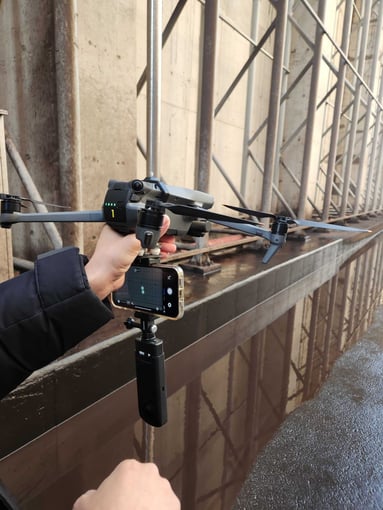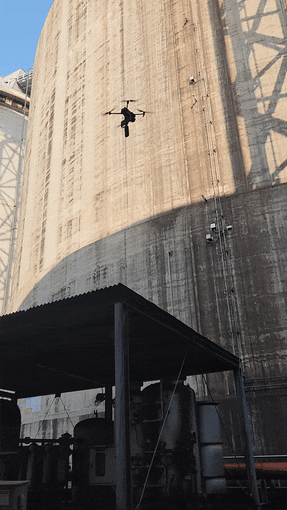Safety Inspection Company is a government-authorized South Korean company that regularly monitors the safety and structural integrity of government-built infrastructure, such as roads, bridges, and tunnels. Traditionally, it ran a safety diagnosis by sending engineers on-site to manually conduct the inspection. When necessary, tools and equipment were brought in to aid inspection, but the critical assessment was ultimately made using their discerning eyes. Results were compiled in a report filled with hundreds upon hundreds of photos taken on-site.
%20(1).png?width=776&height=650&name=image%20(12)%20(1).png)
The image shows engineers conducting a traditional Safety Diagnosis.
This method has worked for Safety Inspection Company for many years, but it has a bigger vision. The traditional inspection method is a time-consuming, labor-intensive, expensive, and error-prone process. Digitalization has brought so many other industries to the forefront of innovation and productivity, so why not do the same for safety diagnostics? Thus, it turned to Artificial Intelligence and advanced photo-capturing technologies to streamline its inspection operations.
Safety Inspection Company discovered Beamo, a digital twin solution that can easily capture any space in 360°, designed to automate and streamline site surveys. With high hopes of modernizing its operations, the company entered into a POC with Beamo for one of its projects: a coal tank that was always at risk of cracks.
Coal, which is used for power generation, is commonly stored in large, cylindrical structures, 30-50 meters tall. Like any other infrastructure built using cement, these coal tanks may develop cracks over time due to factors such as weather, corrosion, and thermal stress. Inspecting coal tanks using the traditional method is extremely challenging and dangerous for engineers because of their immense height and lack of accessibility to inspect them in their entirety.
For the POC to work though, another piece of the puzzle was needed: flying drones.
In addition to the use of a standard tripod, Beamo used a drone and equipped it with a high-resolution camera to fly over the coal tank and capture images of the entire structure. The 360° images were then uploaded to Beamo and a digital twin of the coal tank was produced within minutes.


The image and video show Beamo’s Drone Capture mode setup.
This digital twin was then integrated with Safety Inspection Company’s AI engine, which ran an automated safety diagnostic test on the coal tank. The result is an efficient, non-labor-intensive, and AI-accurate report on cracks and incidents of skinning, bleaching, and rebar exposure.
%20(1).png?width=1600&height=900&name=image%20(13)%20(1).png)
The image shows the digital twin of the coal tank with several potential cracks discovered via AI.
The true test, however, is whether the AI could accurately detect cracks that are visible to the human eye but are more difficult to detect through image captures. So the survey team deliberately captured the 360° images closer to the coal tank, which required more images to complete its digital twin than usual. But the result was that the AI was able to successfully identify cracks even as narrow as 0.1-0.3mm.
The POC was truly a success. It not only reduced the time and effort required but was also just as accurate as if an actual human had scaled the whole tank looking for defects minus the element of danger. It promoted the safety of engineers who no longer had reason to scale 8-story tall structures just to conduct safety audits.
With this, the Safety Inspection Company is now planning to apply the same diagnostic process for other types of infrastructure, such as dams, roads, and bridges, with the aid of Beamo’s Digital Twins.
%20(1).png?width=776&height=650&name=image%20(12)%20(1).png)


%20(1).png?width=1600&height=900&name=image%20(13)%20(1).png)